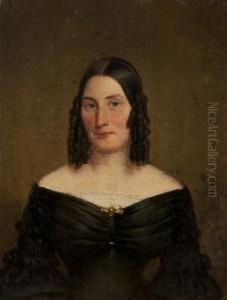J. Verreijt Paintings
Johannes Verreijt, born in 1607 and deceased in 1652, was a Dutch painter and musician whose contributions, while not as widely recognized as some of his contemporaries, offer a fascinating glimpse into the cultural and artistic milieu of the 17th century Netherlands. Verreijt's life and work are situated within the Dutch Golden Age, a period characterized by unprecedented wealth, cultural richness, and artistic innovation within the Dutch Republic. This era saw the flourishing of arts and sciences, with painters like Rembrandt, Vermeer, and Frans Hals capturing the complexities of human life and the beauty of the Dutch landscape with unprecedented skill and sensitivity.
Verreijt's body of work, although less extensively documented than that of the aforementioned masters, reveals a versatile artist adept in both painting and music. His paintings often reflect the Baroque style, characterized by dramatic use of light and shadow, rich coloration, and dynamic compositions. While the specifics of his artistic training remain somewhat elusive, it is evident from his surviving works that he was deeply engaged with the artistic trends of his time, blending influences from both the northern and southern Netherlands, as well as from Italianate styles, which were fashionable among Dutch artists of the period.
In addition to his visual artistry, Verreijt was also noted for his musical talents. The 17th century Netherlands was a vibrant center for music as well as visual arts, with composers and musicians exploring new forms and styles. Verreijt's dual pursuits in painting and music exemplify the era's interdisciplinary approach to art, where the boundaries between different forms of creative expression were frequently blurred. Although specific compositions by Verreijt may not have survived, historical accounts suggest that he was accomplished in this field, contributing to the rich tapestry of Dutch cultural life.
Despite his talents, Johannes Verreijt remains a somewhat enigmatic figure, with only a limited number of his works and accomplishments documented. The reasons for this relative obscurity may include the sheer abundance of talent during the Dutch Golden Age, which has inevitably meant that only a few artists received long-lasting recognition. Furthermore, the survival of artworks and historical records over the centuries is subject to many contingencies, leading to the unfortunate neglect of certain artists. Nonetheless, the existing pieces of Verreijt's oeuvre and records of his musical achievements offer valuable insights into the diverse and dynamic world of 17th-century Dutch art and culture. Scholars and art enthusiasts continue to explore and reassess the contributions of artists like Verreijt, gradually piecing together a more comprehensive understanding of this golden era of artistic production.
